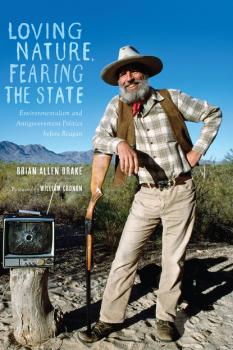Историческая литература
Различные книги в жанре Историческая литератураIn the Land of the Eastern Queendom
The story underlying this ethnography began with the recent discovery and commercialization of the remnant of an ancient �queendom� on the Sichuan-Tibet border. Recorded in classical Chinese texts, this legendary matriarchal domain has attracted not only tourists but the vigilance of the Chinese state. Tenzin Jinba�s research examines the consequences of development of the queendom label for local ethnic, gender, and political identities and for state-society relations.
Empire and Identity in Guizhou
This historical investigation describes the Qing imperial authorities� attempts to consolidate control over the Zhongjia, a non-Han population, in eighteenth-century Guizhou, a poor, remote, and environmentally harsh province in Southwest China. Far from submitting peaceably to the state�s quest for hegemony, the locals clung steadfastly to livelihood choices�chiefly illegal activities such as robbery, raiding, and banditry�that had played an integral role in their cultural and economic survival. Using archival materials, indigenous folk narratives, and ethnographic research, Jodi Weinstein shows how these seemingly subordinate populations challenged state power.
Loving Nature, Fearing the State
A «conservative environmental tradition» in America may sound like a contradiction in terms, but as Brian Allen Drake shows in Loving Nature, Fearing the State , right-leaning politicians and activists have shaped American environmental consciousness since the environmental movement's beginnings. In this wide-ranging history, Drake explores the tensions inherent in balancing an ideology dedicated to limiting the power of government with a commitment to protecting treasured landscapes and ecological health.Drake argues that «antistatist» beliefs–an individualist ethos and a mistrust of government–have colored the American passion for wilderness but also complicated environmental protection efforts. While most of the successes of the environmental movement have been enacted through the federal government, conservative and libertarian critiques of big-government environmentalism have increasingly resisted the idea that strengthening state power is the only way to protect the environment. Loving Nature, Fearing the State traces the influence of conservative environmental thought through the stories of important actors in postwar environmental movements. The book follows small-government pioneer Barry Goldwater as he tries to establish federally protected wilderness lands in the Arizona desert and shows how Goldwater's intellectual and ideological struggles with this effort provide a framework for understanding the dilemmas of an antistatist environmentalism. It links antigovernment activism with environmental public health concerns by analyzing opposition to government fluoridation campaigns and investigates environmentalism from a libertarian economic perspective through the work of free-market environmentalists. Drake also sees in the work of Edward Abbey an argument that reverence for nature can form the basis for resistance to state power. Each chapter highlights debates and tensions that are important to understanding environmental history and the challenges that face environmental protection efforts today.
Encounters in Avalanche Country
Every winter settlers of the U.S. and Canadian Mountain West could expect to lose dozens of lives to deadly avalanches. This constant threat to trappers, miners, railway workers-and their families-forced individuals and communities to develop knowledge, share strategies, and band together as they tried to survive the extreme conditions of «avalanche country.» The result of this convergence, author Diana Di Stefano argues, was a complex network of formal and informal cooperation that used disaster preparedness to engage legal action and instill a sense of regional identity among the many lives affected by these natural disasters.Encounters in Avalanche Country tells the story of mountain communities' responses to disaster over a century of social change and rapid industrialization. As mining and railway companies triggered new kinds of disasters, ideas about environmental risk and responsibility were increasingly negotiated by mountain laborers, at the elite levels among corporations, and in socially charged civil suits. Disasters became a dangerous crossroads where social spaces and ecological realities collided, illustrating how individuals, groups, communities, and corporate entities were all tangled in this web of connections between people and their environment.Written in a lively and engaging narrative style, Encounters in Avalanche Country uncovers authentic stories of survival struggles, frightening avalanches, and how local knowledge challenged legal traditions that defined avalanches as acts of god. Combining disaster, mining, railroad, and ski histories with the theme of severe winter weather, it provides a new and fascinating perspective on the settlement of the Mountain West.
Selected Letters of A. M. A. Blanchet
In 1846, French Canadian-born A. M. A. Blanchet was named the first Catholic bishop of Walla Walla in the area soon to become Washington Territory. He arrived at Fort Walla Walla in late September 1847, part of the largest movement over the Oregon Trail to date. During the thirty-two years of Blanchet's tenure in the Northwest, the region underwent profound social and political change as the Hudson's Bay Company moved headquarters and many operations north following the Oregon Treaty, U.S. government and institutions were established, and Native American inhabitants dealt with displacement and discrimination. Blanchet chronicled both his own pastoral and administrative life and his observations on the world around him in a voluminous correspondence-almost nine hundred letters-to religious superiors and colleagues in Montreal, Paris, and Rome; funding organizations; other missionaries; and U.S. officials. This selection of Blanchet's letters provides a fascinating view of Washington Territory as seen through the eyes of an intelligent, devout, energetic, perceptive, and occasionally irascible cleric and administrator.Almost all of Blanchet's correspondence was in French. Roberta Stringham Brown and Patricia O'Connell Killen have chosen forty-five of those letters to translate and annotate, creating a history of early Washington that provides new insights into relationships, events, and personalities. A number of the letters provide first-hand glimpses of familiar events, such as the Whitman tragedy, the California gold rush, Indian wars and land displacement, transportation advances, and the domestic material culture of a frontier borderland. Others voice the hardships of historically underrepresented groups, including Native Americans, Metis, and French Canadians, and the experiences of ordinary people in growing population centers such as Seattle, Walla Walla, and Vancouver, Wash-ington. Still others describe the struggle to bring social, medical, and educational institutions to the region, a struggle in which women religious workers played a key role. The letters-and the editors' fascinating annotations-provide an engaging and insightful look at an important period in the history of the Pacific Northwest and southwest Canada.
In Pursuit of Alaska
This collection of Alaskan adventures begins with a newspaper article written by John Muir during his first visit to Alaska in 1879, when the sole U.S. government representative in all the territory's 586,412 square miles was a lone customs official in Sitka. It closes with accounts of the gold rush and the 1909 Alaska-Yukon-Pacific Exposition in Seattle. Jean Meaux has gathered a superb collection of articles and stories that captivated American readers when they were first published and that will continue to entertain us today. The authors range from Charles Hallock (the founder of Forest and Stream, a precursor of Field and Stream) to New York society woman Mary Hitchcock, who traveled with china, silver, and a 2,800 square foot tent. After explorer Henry Allen wore out his boots, he marched barefoot as he continued mapping the Tanana River, and Episcopal Archdeacon Hudson Stuck mushed by dog sled in Arctic winters across a territory encompassing 250,000 miles of the northern interior.Although the United States acquired Alaska in 1867, it took more than a decade for American writers and explorers to focus attention on a territory so removed from their ordinary lives. These writers-adventurers, tourists, and gold seekers-would help define the nation's perception of Alaska and would contribute to an image of the state that persists today. This collection unearths early writings that offer a broad view of American encounters with Alaska accompanied by Meaux's lively and concise introductions. The present-day adventurer will find much to inspire exploration, while students of the American West can gain new access to this valuable trove of pre-Gold Rush Alaska archives.For more information go to: http://www.inpursuitofalaska.com
The Everyday Life of the State
Today there are more states controlling more people than at any other point in history. We live in a world shaped by the authority of the state. Yet the complexion of state authority is patchy and uneven. While it is almost always possible to trace the formal rules governing human interaction to the statute books of one state or another, in reality the words in these books often have little bearing upon what is happening on the ground. Their meanings are intentionally and unintentionally misrepresented by those who are supposed to enforce them and by those who are supposed to obey them, generating a range of competing authorities, voices, and allegiances. The Everyday Life of the State explores this «everyday» transformation of state authority into multiple scripts, narratives, and political activities. Drawing upon case studies from across the Middle East, North Africa, and Asia, the chapters in this book investigate the many ways in which those subjects traditionally regarded as being weak, passive, and obedient manage not only to resist the authority of state actors but to actively subvert and appropriate it, in the process making, unmaking, and remaking the boundaries between state and society over and over again. Collectively, these chapters make an important contribution to the expanding literature on «everyday politics.»The «state in society» concept used in this volume has been developed by political scientist Joel S. Migdal, the Robert F. Philip Professor of International Studies in the University of Washington's Henry M. Jackson School of International Studies.
Icons of Danish Modernity
Julie Allen utilizes the lives and friendship of the Danish literary critic George Brandes (1842-1927) and the silent film star Asta Nielsen (1881-1972) to explore questions of culture and national identity in early twentieth-century Denmark. Danish culture and politics were influenced in this period by the country's deeply ambivalent relationship with Germany. Brandes and Nielsen, both of whom lived and worked in Germany for significant periods of time, were seen as dangerously cosmopolitan by the Danish public, even while they served as international cultural ambassadors for the very society that rejected them during their lifetimes. Allen argues that they were the prototypical representatives of a socially liberal and culturally modern «Danishness» ( Danskhed ) that Denmark itself only gradually (and later) grew into.This lively study brings its central characters to life while offering an original, thought provoking analysis of the origins and permutations of Danish modernism and Danish national identity–issues that continue to be significant in today's multi-ethnic Denmark. Icons of Danish Modernity is a book about the uneasy waves that arise when celebrities take on national symbolism, and the beginnings of this formula in the early twentieth century.
Over the Mountains Are Mountains
Clark Sorensen presents a description of the economic and ecological organization of rural Korean domestic groups and an analysis of their adaption to the changes brought about by Korea's rapid industrialization.Still one of the only book-length studies of rural, peasant Korean households, Over the Mountains Are Mountains shows how the industrialization of Korea led neither to the proletarianization of the peasants nor to a fundamental change in the structure of rural families, but rather to strategic changes in patterns of migration, labor allocation, and residence.
Free Boy
Free Boy is the story of a 13-year-old slave who escaped from Washington Territory to freedom in Canada on the West's underground railroad.When James Tilton came to Washington Territory as surveyor-general in the 1850s he brought with his household young Charles Mitchell, a slave he had likely received as a wedding gift from a Maryland cousin. The story of Charlie's escape in 1860 on a steamer bound for Victoria and the help he received from free blacks reveals how national issues on the eve of the Civil War were also being played out in the West.Written with young adults in mind, the authors provide the historical context to understand the lives of both Mitchell and Tilton and the time in which the events took place. The biography explores issues of race, slavery, treason, and secession in Washington Territory, making it both a valuable resource for teachers and a fascinating story for readers of all ages.









